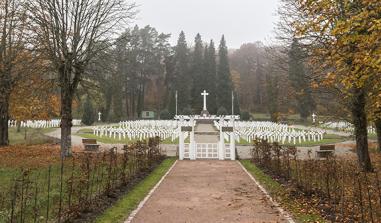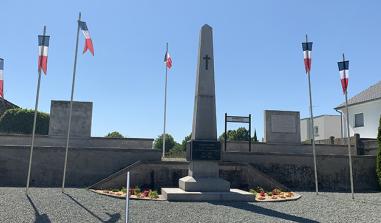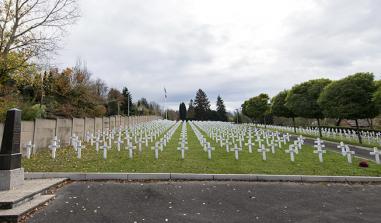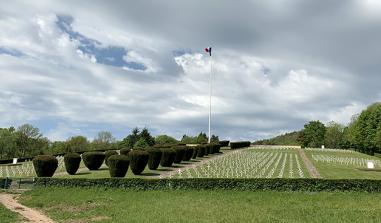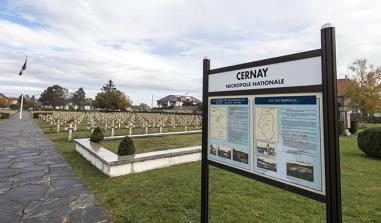The Hartmannswillerkopf
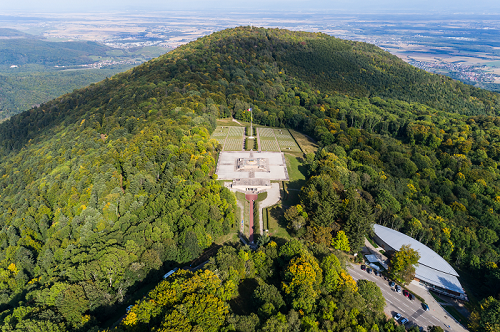
Cemetery. ©Evadb
The Hartmannswillerkopf, a rocky mountain spur dominating the Alsace plain to the south of the Vosges, is one of the four national Great War monuments
During the First World War, the Hartmannswillerkopf, a rocky mountain spur dominating the Alsace plain to the south of the Vosges, occupied a strategic position. More than 150,000 men belonging to regiments that came from the whole of France, in particular the Chasseurs et les Diables rouges (Chasseurs and Red Devils) of the Colmar regiment, fought there for four years in order to re-conquer the Alsace. Around 25,000 officers, non-commissioned officers and soldiers fell on the "Vieil Armand", as the poilus or foot soldiers christened it. Situated in the Vosges mountain range at an altitude of 956 metres, the Hartmannswillerkopf site is one of four national monuments of the Great War, during which time it was a strategic battleground. About 25,000 French soldiers died on the slopes of the "Vieil Armand". Listed as a historic monument in 1921, it has been developed thanks to a national fund under the noble patronage of the President of the Republic and five Marshals of France. Several buildings were constructed between 1924 and 1929 at this important place of remembrance and the whole place was inaugurated in October 1932 by the President of the Republic, Albert Lebrun.
Today the site of the battlefield, well maintained and signposted, is one of the most well preserved in France. Forty-five kilometres of paths and trenches provide access to French fortifications, such as the Roche Sermet and the Roche Mégard and to some German structures (Aussichtsfelsen etc.). These paths also lead to a cemetery, to the monument to the 152nd infantry regiment and to the steles (Serret, Chambaud and the one recalling the sacrifice of lieutenant Pierre Scheurer, who died on the 28th April 1915) and finally, to some German monuments such as the one to the chasseurs, and to the staircase with 560 steps "to the sky".
Built on sloping land, the Silberloch cemetery has 1,264 graves of soldiers who could be identified and six ossuaries. Dominating the cemetery, an alter to the Homeland, facing east towards the summit of the Hartmannswillerkopf, has been constructed on a stone esplanade above the crypt. Identical to the one of 1790, it symbolises the mass movement of volunteers who rushed to the borders to defend the Republic. On its four sides are the names of the towns that took part in financing the collection of monuments: Paris, Strasbourg, Colmar, Mulhouse, Besançon, Metz, Lille, Rouen, Lyon, Marseille, Bordeaux, Nantes etc. An eighty metre long trench provides access to the cultural crypt, in the centre of which is the ossuary. Covered with a bronze shield six metres in diameter, it contains the remains of some 12,000 unknown soldiers. The word "Patrie" (Homeland) is engraved on the shield in gold lettering. The entrance to the crypt, which is closed by a wrought iron gate bearing the inscription Ad lucem perpetuat, is guarded by two archangels created by the sculptor Antoine Bourdelle.
Inside, weapons and equipment recovered from the battlefield are on display, as well as photographs and sculptures. On the walls of the corridor leading to the crypt are bronze plaques bearing the numbers of the 101 units, regiments et battalions that succeeded each other on the battle field over fifty-two months. A Catholic Chapel with a statue of the Virgin Mary on top, also by Antoine Bourdelle, is decorated with inscriptions composed by Monseigneur Ruch, the first bishop of Strasbourg after 1918. Sites for the Protestant and Jewish religions have also been built. A reinforced concrete cross 20 m high and 5.25 m wide stretches out towards the hills of the Vosges. It was illuminated for the first time on the night of the 10th November 1936.
The Vieil Armand Battlefield Route des crêtes 68700 Wattwiller Tel.: 03 89 75 50 35
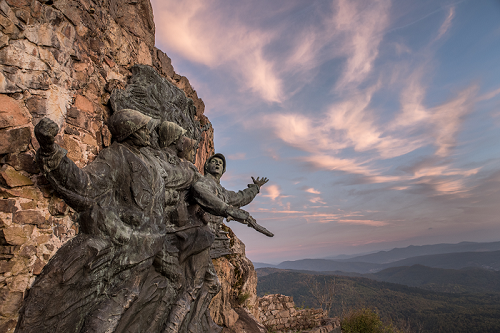
Le monument du 152e Régiment d’Infanterie, aménagé sur les flancs de la montagne en 1921.
© Vincent Schneider
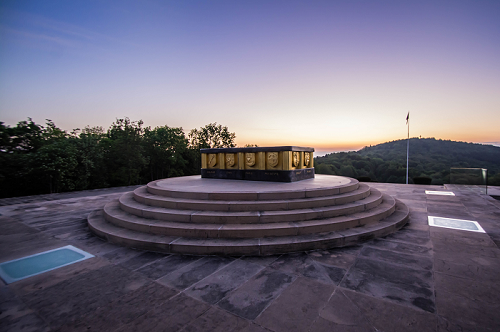
Perspective entre l’autel de la patrie du Monument National, le mat de la nécropole du Silberloch et la croix sommitale du Hartmannswillerkopf.
© Vincent Schneider
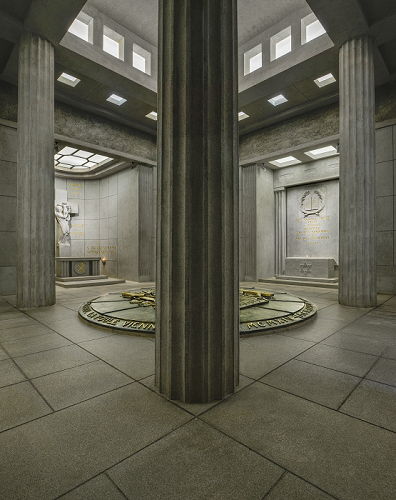
Vue intérieure de la crypte du Monument National et de son ensemble statutaire créé par Antoine Bourdelle.
© Patrick Bogner
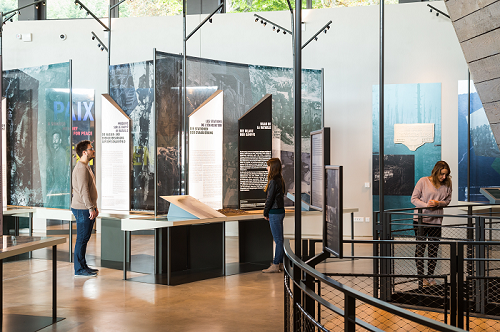
Vue de l’exposition permanente de l’Historial francoallemand de la Grande Guerre.
© AAA-IllProd
Practical information
68700
Wattwiller
03 89 75 50 35
Accessible toute l'année de 14h00 à 18h00
du 1er mai à fin octobre uniquement les dimanches et jours fériés


